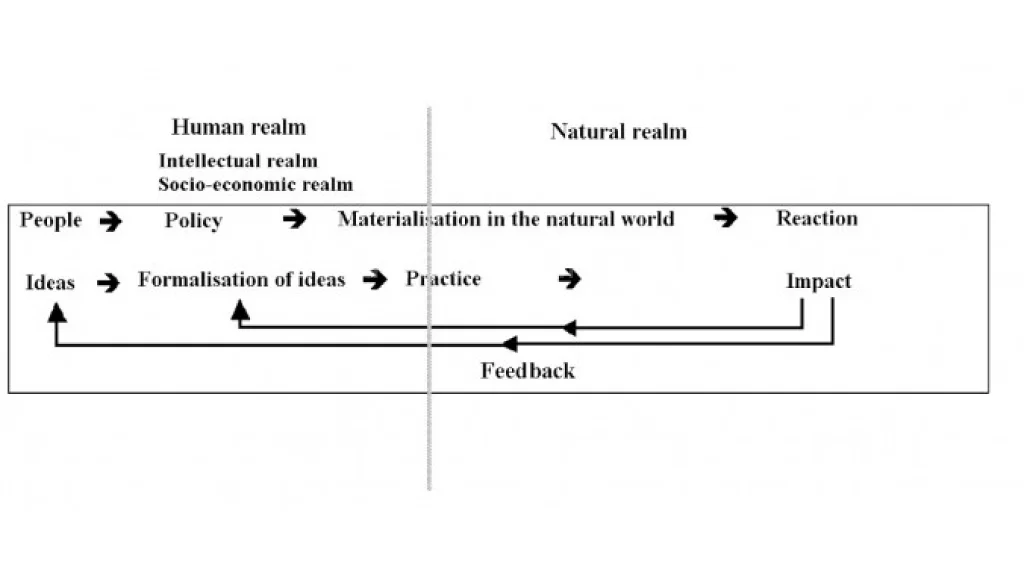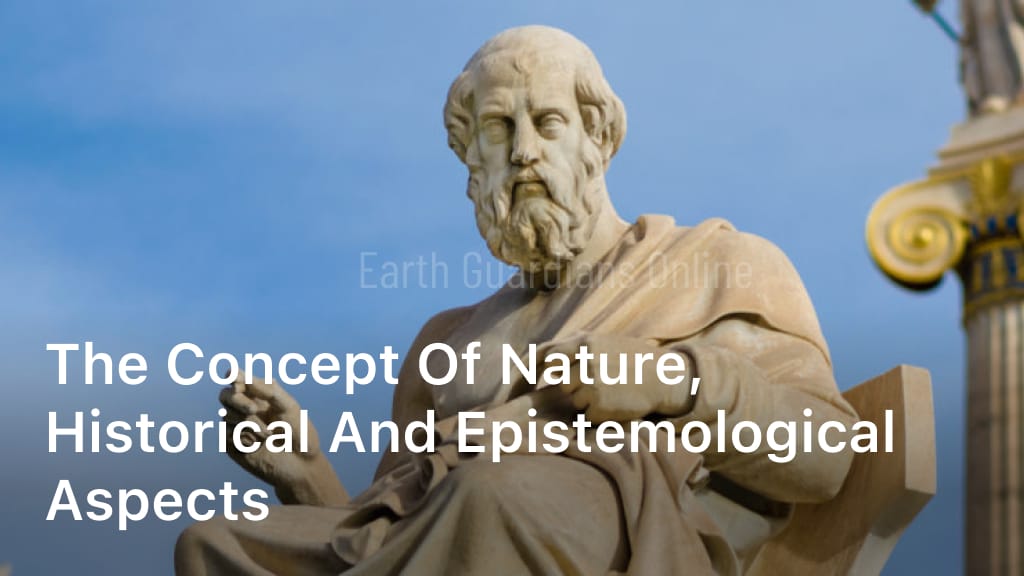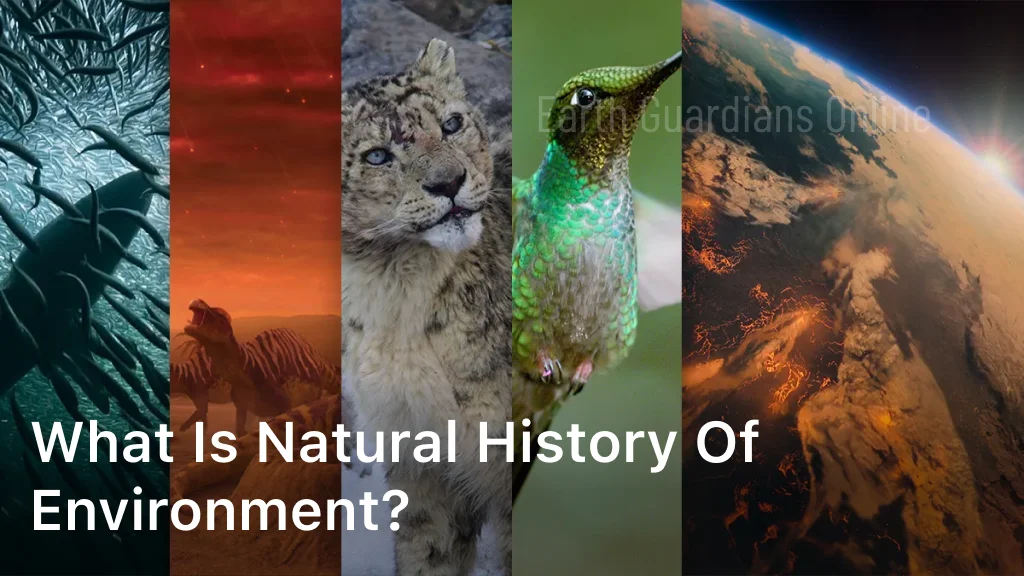Earthguardiansonline.com. What is the Importance of Environmental History? Explore with us the significance of environmental history. Understand why it’s crucial and how it impacts our lives and future. What is the importance of environmental history? Find out now!
As we continue to face environmental challenges worldwide, it’s important to understand the significance of environmental history. Environmental history refers to the study of how humans have interacted with the natural world over time. By examining historical environmental patterns, we gain insights into the impacts of our actions on the planet and can work towards a sustainable future.
Environmental history allows us to understand the past and present state of our environment, identify trends and patterns, and predict future changes. By studying environmental history, we can gain insights into how human activities have influenced the natural world and how we can protect our planet for future generations.
Key Takeaways:
- Environmental history is the study of human interactions with the natural world over time.
- Understanding environmental history can help us predict future changes and work towards a sustainable future.
- Studying environmental history allows us to identify patterns and trends in environmental changes.
- By examining historical environmental challenges, we can inform present and future policy-making.
- Environmental history offers valuable lessons for promoting sustainable practices and conserving our natural heritage.
Table of Contents
ToggleWhat is the Importance of Environmental History?
In this section, we will delve into the definition and study of environmental history to better understand the field. Environmental history is the study of the interaction between humans and the natural world over time. It seeks to understand how human activities have changed the environment and how the environment, in turn, has influenced human societies.
Environmental history research focuses on a variety of topics such as climate change, land use, energy, and biodiversity. Researchers use a variety of methods to study environmental history, including archival research, fieldwork, and quantitative analysis. By using a multidisciplinary approach, including the natural sciences, social sciences, and humanities, environmental history provides a holistic view of the past.

Environmental History and Human Interactions
In this section, we will explore the fascinating relationship between humans and the environment throughout history. Human activities have had a significant impact on the natural world, leading to historical environmental changes that have shaped the world as we know it today.
The Human-Environment Relationship
The human-environment relationship is a complex and ever-changing dynamic. Humans have interacted with the environment in a variety of ways throughout history, from hunting and gathering to modern industrialization. These interactions have resulted in both positive and negative outcomes for the environment.
“The environment and human behavior are closely intertwined, shaping each other in intricate and profound ways.”
Historical Environmental Changes
Throughout history, humans have caused significant environmental changes, altering landscapes, and ecosystems. For example, deforestation, urbanization, and pollution are all human activities that have impacted the environment in various ways.
| Human Activity | Environmental Impact |
|---|---|
| Deforestation | Loss of habitat for wildlife, soil erosion, and climate change |
| Urbanization | Loss of natural habitats, air and water pollution, and increased carbon emissions |
| Pollution | Contamination of air, water, and soil, leading to negative impacts on human and wildlife health |
The Value of Studying Environmental History
Studying environmental history provides us with valuable insights into the relationship between humans and the environment. By understanding how past human actions have impacted the environment, we can learn from historical environmental mistakes and make more informed decisions in the present and future.
- We can gain a better understanding of the long-term impact of human activities on the environment
- We can identify patterns and trends in environmental change over time
- We can learn about historical conservation efforts and how they can be applied today
Overall, understanding the human-environment relationship and historical environmental changes can help us make more sustainable choices and work towards a healthier future for our planet.
Environmental History and Policy Making
In this section, we will discuss the role of environmental history in shaping policies and legislation. By understanding past environmental challenges, we can gain valuable insights to inform present and future policy decisions.
Environmental legislation has been influenced by historical perspectives on environmental issues. For instance, the introduction of the National Environmental Policy Act (NEPA) in 1970 was partly a response to the publication of Rachel Carson’s “Silent Spring” in 1962. Carson’s work drew attention to the environmental dangers of pesticides and encouraged a public discussion about the impact of human activities on the environment.
“The NEPA requires federal agencies to assess the environmental impact of their actions and use that information to inform their decision-making. This law reflects a broader trend in environmental policy to prioritize the protection of natural resources and ecosystems.”
Environmental history also provides policymakers with information about how past policies have succeeded or failed. By understanding the historical context of these policies, policymakers can identify areas for improvement and better predict the results of future policies.
A useful framework for understanding the historical development of environmental policy is the “policy cycle.” This cycle includes the stages of agenda setting, policy formulation, adoption, implementation, and evaluation.
| Stage | Description |
|---|---|
| Agenda Setting | The identification of a problem or issue that requires policy attention. |
| Policy Formulation | The development of policy alternatives and the selection of a preferred course of action. |
| Adoption | The approval of a policy by a legislative body or other authority. |
| Implementation | The execution of a policy by government agencies or other actors. |
| Evaluation | The assessment of policy effectiveness and the identification of areas for improvement. |
By examining the policy cycle through an environmental history lens, we can better understand how past policies have impacted our environment and identify areas where current policies may be falling short. This allows us to make more informed decisions when developing policies to address current environmental challenges.
Overall, environmental history plays a crucial role in policy making by informing policymakers of past successes and failures, identifying areas for improvement, and providing historical context for current policies. By studying environmental history, we can better protect our planet for future generations.
Learning from Environmental History
As we reflect on the past and examine the relationship between humans and the environment, we can learn valuable lessons to guide our actions towards sustainability. By acknowledging historical environmental mistakes, we can avoid repeating them in the future.
“Those who cannot learn from history are doomed to repeat it.” – George Santayana
One example of learning from environmental history is the conservation movement. Historical conservation movements helped preserve natural heritage and promote sustainable practices. We can continue to apply those lessons today by supporting conservation efforts and advocating for sustainable practices in our communities.
Another area where we can learn from environmental history is in addressing climate change. By studying historical climate patterns, we can better understand and address the current and future challenges of climate change. We can also learn from how past societies adapted to changing climate conditions and apply those lessons to our own efforts towards sustainability.
Overall, studying environmental history can provide us with valuable insights into how we can address environmental challenges and promote sustainable practices. By reflecting on our past mistakes and successes, we can work towards a better future for ourselves and future generations.
Environmental History and Climate Change
Studying the history of our planet’s climate patterns is a crucial aspect of environmental history that can offer valuable insights into current and future climate challenges. By examining past climate data, we can better understand the processes that have led to significant environmental changes. This knowledge can inform our efforts to mitigate the effects of climate change and adapt to the changing climate.
Throughout history, there have been many notable changes in the climate. Some of these changes were caused by natural factors such as volcanic eruptions, while others were influenced by human activities such as deforestation and the burning of fossil fuels.
| Historical Climate Patterns | Causes |
|---|---|
| Ice Ages | Natural causes such as changes in the Earth’s orbit and solar radiation |
| Holocene Climate Optimum | Natural climate variation |
| Little Ice Age | Natural causes such as changes in solar radiation and volcanic activity |
| Current Climate Change | Influenced by human activities such as burning of fossil fuels, deforestation, and industrialization |
Climate change research is an important area of study within environmental history. Through careful analysis of historical climate data, researchers can identify trends and patterns that can provide insights into future climate trends. This research can inform policymakers and help us develop strategies to mitigate the effects of climate change.
Understanding the relationship between environmental history and climate change is crucial as we work towards a sustainable future. By applying the lessons learned from past climate patterns, we can work towards mitigating the harmful effects of human activities on the climate and adapt to the changing environment.
Environmental History and Conservation Efforts
In our efforts to preserve our natural heritage and promote sustainable living, environmental history plays a significant role. By studying the past, we can learn from the successes and failures of the historical conservation movements and apply this knowledge to today’s conservation efforts.
One example of successful conservation is the establishment of national parks. The first national park, Yellowstone, was created in 1872 to protect its unique features and natural beauty. Today, the National Park Service oversees 84 million acres of protected land across the United States. The creation of national parks serves as a successful example of how conservation efforts can work to preserve our environment for future generations.
| Historical Conservation Movements | Successes | Failures |
|---|---|---|
| Environmental Movement in the 1960s and 1970s | Passage of influential environmental legislation such as the Clean Air Act and Clean Water Act | Limited public awareness and support for environmental issues, leading to a slow implementation of policies |
| Conservation Movement in the late 19th century | Creation of national parks and forests, and the establishment of wildlife sanctuaries | Displacement of Native American communities from their land to make way for national parks |
While we can learn from these past successes, we must also acknowledge the failures and limitations of historical conservation movements. The displacement of Native American communities during the creation of national parks serves as an important reminder that conservation efforts must not come at the expense of marginalized communities. We must strive to create conservation policies that are equitable and inclusive.
By studying environmental history, we can gain a deeper understanding of the complex relationships between humans and the environment. This understanding will help us to create more effective conservation policies that balance the needs of the environment with the needs of the communities that depend on it.
Conclusion
Throughout this article, we have explored the importance of environmental history and its impact on our lives and future. By studying environmental history, we can gain valuable insights into how our relationship with the environment has evolved and how it has affected the natural world around us.
Understanding environmental history can inform present and future policymaking, helping us to address environmental challenges, and promote sustainable practices. This knowledge can also help us learn from past environmental mistakes and apply this knowledge to protect our environment in the future.
As we face the challenges of climate change and strive to preserve our natural heritage, the significance of studying environmental history has never been greater. By looking to the past, we can learn from our mistakes and work towards a sustainable future for generations to come.
FAQ
What is the importance of environmental history?
Environmental history is important because it provides us with a deeper understanding of how human activities have impacted the natural world. By studying environmental history, we can learn from past mistakes and make more informed decisions to protect our environment and ensure a sustainable future.
What is environmental history?
Environmental history is the study of how humans have interacted with and shaped the natural world throughout history. It explores the relationships between human societies and their environments, as well as the impacts of these interactions on both the environment and human societies themselves.
How does environmental history influence policymaking?
Environmental history provides valuable insights into past environmental challenges and their outcomes. By understanding these historical perspectives, policymakers can make more informed decisions and develop effective strategies to address present and future environmental issues.
What can we learn from environmental history?
Environmental history teaches us lessons from the past, such as the consequences of unsustainable practices and the benefits of conservation efforts. By learning from these lessons, we can make better choices and implement sustainable practices to protect our environment and ensure a better future.
How does environmental history relate to climate change?
Environmental history helps us understand historical climate patterns and changes, which can provide insights into current climate change challenges. By studying the past, we can gain knowledge that can inform climate change research, mitigation strategies, and adaptation measures.
What role does environmental history play in conservation efforts?
Environmental history plays a crucial role in conservation efforts by providing a historical context for understanding the importance of preserving natural heritage. By studying past conservation movements and successes, we can develop sustainable conservation practices and preserve our environment for future generations.










